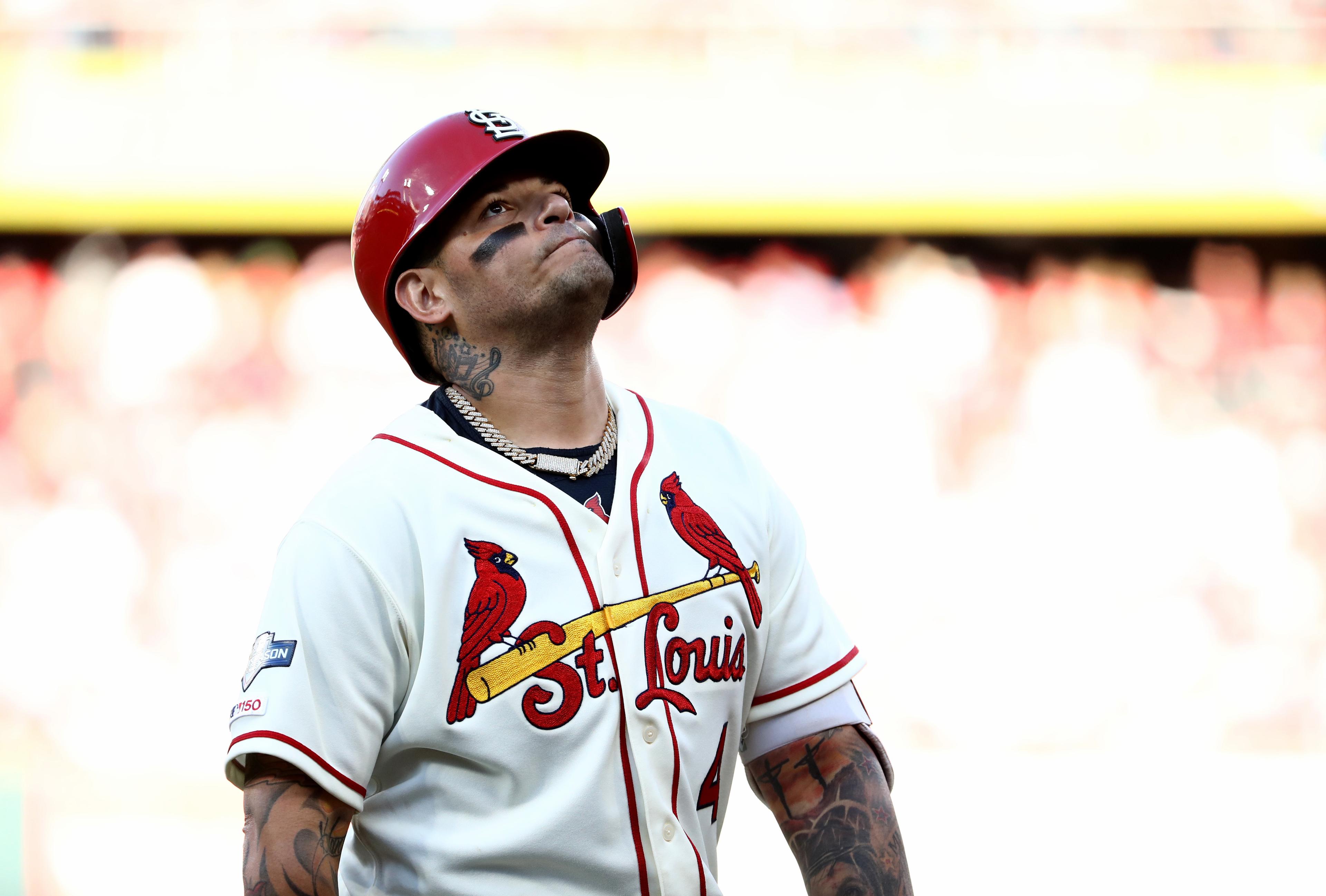
Through two games of the NLCS, the St. Louis Cardinals have four hits, which is the equivalent of about one and a third Nelly albums from the early 2000s. The last of those four was a knuckling José Martínez line drive that fooled Nats center fielder Michael A. Taylor with two outs in the eighth inning. That hit plated the Cardinals’ first run of the series and snapped a 22-inning scoreless streak dating back to the fourth inning of Game 5 of the NLDS.
The Cardinals are in about as bad a position as they could be after two games: They’re down 2-0 with three road games to come, in which they’ll have to beat at least one of Stephen Strasburg or Patrick Corbin in order to avoid a sweep. Teams that won the first two games of a best-of-seven series on the road have gone on to win the series 21 out of 24 times in baseball history, which illustrates the imposing nature of the mountain the Cardinals have forced themselves to climb.
In Game 1 of the 2013 ALCS, Aníbal Sánchez, then of the Detroit Tigers, no-hit the Red Sox for six innings, and Max Scherzer followed suit with five innings of no-hit ball in Game 2. Six years later, the pair was reunited on the Washington Nationals and one-upped their previous achievement: In Game 1 of the 2019 NLCS, Sánchez took a no-hitter into the eighth inning, and in Game 2, Scherzer kept the Cardinals hitless until the seventh inning. By the time the Cardinals offense woke up—and wakefulness is graded on a sliding scale for a club that’s managed to scratch out one run since Wednesday night—the Nationals had already taken the lead and forced the Cardinals to play off their back foot.
It’s not for lack of quality pitching that the Cardinals find themselves in this predicament: Both Miles Mikolas and the ageless Adam Wainwright pitched very well, but this isn’t tournament soccer when a team can play outstanding defense, neglect scoring altogether, and pray for a shoot-out. Baseball teams that don’t hit lose, and the Cardinals have almost literally not hit during their past two and a half games.
In addition to the obvious downside of not hitting—most notably, allowing five runs in two games and still being down 2-0 in the series—the Cardinals could not have played more perfectly into Washington’s planned pitcher usage.
The Nationals’ major and perhaps only weakness is that their pitching staff is extremely top-heavy. Washington has three absolute top-end starting pitchers—Scherzer, Strasburg, and Corbin—and three other pitchers—Sánchez and relief aces Sean Doolittle and Daniel Hudson—who are mostly trustworthy but sometimes vulnerable. The other five pitchers on the postseason roster are batting practice-grade, and any inning they pitch represents a prime opportunity for the Cardinals to score.
But through two games, the Nationals haven’t had to dip into the lower reaches of their bullpen at all. Not only that, the five-game NLDS—and heavy use of Corbin out of the bullpen in that series—forced Washington manager Dave Martinez to start his weakest starter, Sánchez, in Game 1. The Cardinals spurned that gift by failing to get a hit off Sánchez, much less a run, until the eighth inning.
Even the singles that broke up Washington’s no-hit bids might have played into the Nationals’ hands. Both Sánchez and Scherzer were tiring as they pitched deeper into the game. If Martinez weighed the competing concerns of the no-hitter and the playoff game against each other, he might have left one starter or both in the game longer than advisable, which would have given the Cardinals the chance to attack an exhausted starter or set the table with walks. But in both games, the no-hit bid ended at a time that made Martinez’s decision easy.
There’s little cause for optimism for the Cardinals’ offense. Of their eight base runners this series, three have come from three pinch-hit plate appearances. Their starters have just two singles, two walks, and a hit-by-pitch in 54 plate appearances. They’ve struggled against Sánchez’s slop and guile and Scherzer’s unforgiving power, and with Strasburg and Corbin to come, the only reason to expect things to get better is that they can’t get any worse.